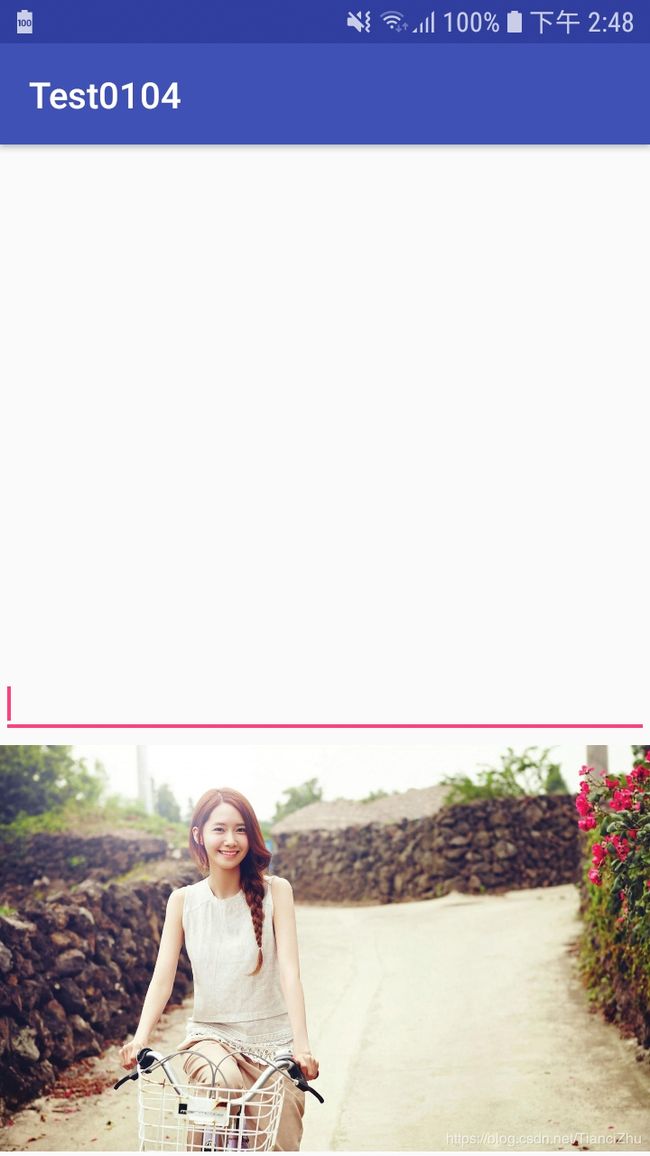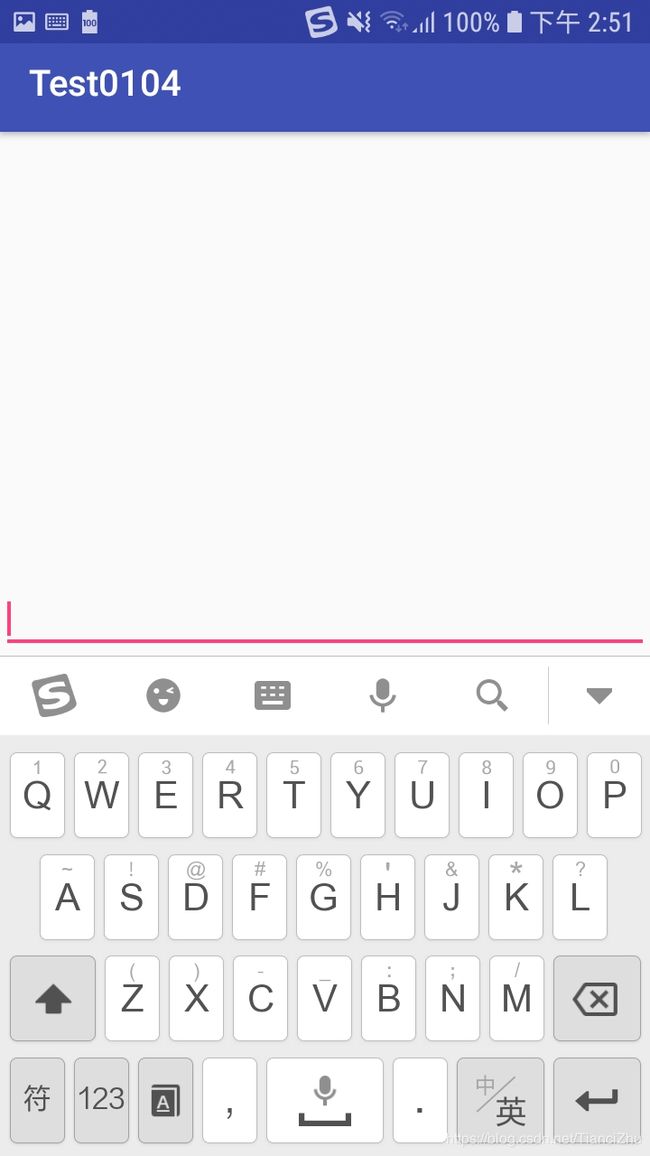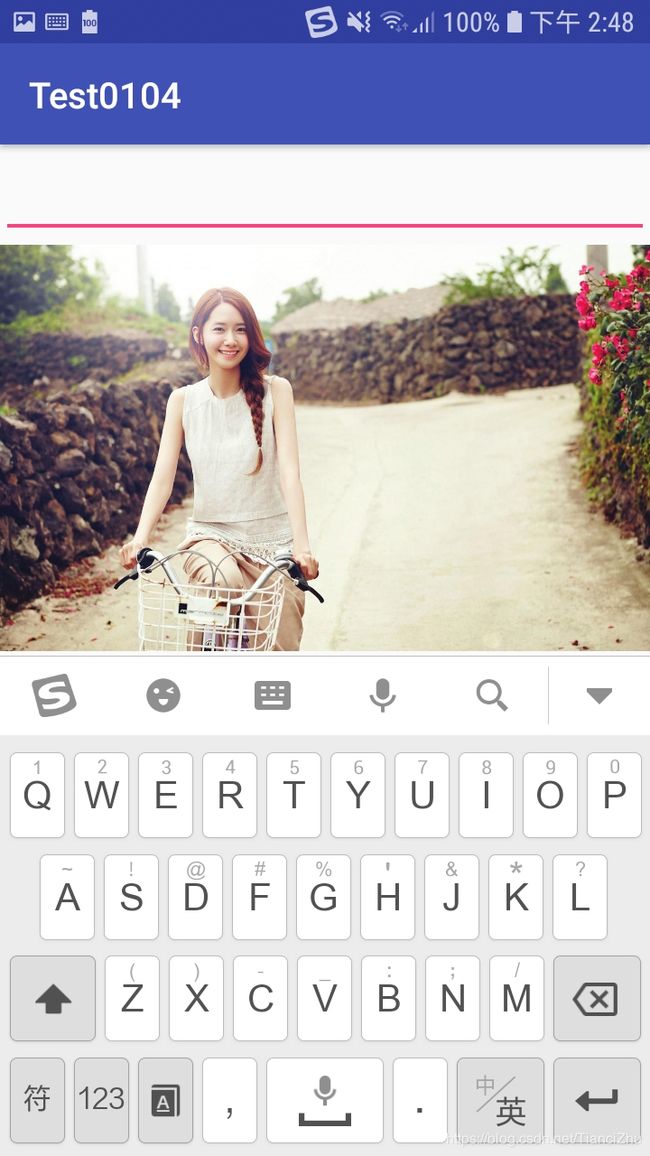- 使用Python实现LLM的文本生成:风格迁移与内容控制
二进制独立开发
GenAI与Python非纯粹GenAIpython开发语言人工智能自然语言处理分布式语言模型transformer
文章目录引言1.大型语言模型(LLM)概述1.1Transformer架构1.2预训练与微调2.文本生成基础2.1无条件生成2.2条件生成3.风格迁移3.1风格迁移的基本原理3.2使用Python实现风格迁移4.内容控制4.1内容控制的基本原理4.2使用Python实现内容控制5.高级技巧与优化5.1多轮对话生成5.2生成参数优化6.应用场景与未来展望结论引言随着自然语言处理(NLP)技术的快速发
- JavaScript 操作符与表达式
布兰妮甜
#JavaScript基础javascript操作符表达式箭头函数前端开发
Hi,我是布兰妮甜,编写流畅、愉悦用户体验的程序员。JavaScript是一种功能强大且灵活的编程语言,广泛应用于前端和后端开发。它提供了一系列丰富的操作符和表达式来处理数据、执行逻辑判断以及控制程序流程。理解这些概念对于编写高效、可读性强的代码至关重要。下面将详细探讨JavaScript中的操作符与表达式。文章目录一、操作符(Operators)二、表达式(Expressions)三、总结一、操
- C++auto和decltype的用法
programming expert
算法数据结构
在C++中,auto和decltype是两个非常有用的关键字,它们帮助程序员更方便地处理类型推导和类型声明。以下是它们的具体用法:autoauto关键字用于自动类型推导,即让编译器根据初始化表达式来推断变量的类型。这在处理复杂类型或模板编程时特别有用,因为它可以简化代码并减少类型错误。用法示例:#include#includeintmain(){//自动推导整数类型autox=42;//x的类
- Python函数——函数的传入参数
0号——开拓者
python开发语言
一、引言在Python中,函数是组织代码的基本单位之一,它不仅可以帮助我们提高代码的复用性,还能使程序的结构更加清晰。在定义函数时,通常会需要传入一些数据,这些数据称为函数参数。参数是函数与外界交互的桥梁,它们使得同一个函数能够处理不同的输入,从而产生不同的输出。在本文中,我们将深入探讨Python函数的传入参数,包括如何定义、使用以及不同类型的参数如何影响函数的行为。二、传入参数的功能1、传入参
- PL/SQL语言的文件操作
云端 架构师
包罗万象golang开发语言后端
PL/SQL语言的文件操作引言PL/SQL(ProceduralLanguage/SQL)是Oracle数据库提供的一种过程化编程语言,它结合了SQL的强大数据处理能力和过程性编程的灵活性。PL/SQL不仅可以用于数据库的操作和处理用户输入的数据,还可以进行丰富的文件操作。随着数据量的增加和信息处理需求的提高,掌握PL/SQL中的文件操作技术,对于数据库管理员和开发人员而言,显得尤为重要。本文将对
- 程序代码篇---Python日志输出
Ronin-Lotus
程序代码篇python学习数据挖掘模块测试性能优化安全架构人机交互
文章目录前言Python日志输出python的logging日志库模块(一)日志级别:1.DEBUG2.INFO3.WARNING4.ERROR5.CRITICAL(二)logging模块中四个核心组成组件1.Logger2.Handler3.Formatter4.Level5.实例6.RotatingFileHandler日志处理器总结前言本文仅仅简单介绍了Python中日志输出管理。Pytho
- Vue 中实现修改数组,并保持页面渲染数据是响应式更改
上趣工作室
vue3.xvue2.xvue.jsjavascript前端
如果你在Vue中使用数组并希望确保对数组项的修改是响应式的,直接替换数组项可能不会触发Vue的响应式更新。为了确保响应式更新,你可以使用Vue提供的Vue.set()方法(在Vue2中)或使用this.$set()方法(在Vue2和Vue3中的组合式API)。示例代码(Vue2和Vue3)假设你在Vue组件中处理这个问题:UpdateCard{{card.name}}:{{card.value}}
- python,如何设置和读取文件的路径,详细版
资源存储库
算法笔记python开发语言
目录python,如何设置和读取文件的路径,详细版1.路径的基本概念2.设置路径手动指定路径使用os和pathlib模块1.使用os.path2.使用pathlib3.文件读取和写入文本文件的读取文本文件的写入逐行读取4.检查文件和目录是否存在5.获取和设置当前工作目录6.处理跨平台路径总结python,如何设置和读取文件的路径,详细版在Python中,设置和读取文件路径是一个常见任务。以下是详细
- Python 获取字典的值:全面指南
egzosn
pythonjava服务器前端linux
字典(dict)是Python中一个强大的数据结构,用于存储键值对。无论是处理JSON数据,还是设计复杂的配置文件,字典都无处不在。本文将全面介绍在Python中获取字典值的各种方法,通过多个详细的代码示例,帮助你掌握如何在不同场景下灵活操作字典。一、字典基础知识在Python中,字典使用花括号{}定义,其键必须是不可变的(如字符串、数字或元组),值可以是任意类型。以下是一个简单的字典示例:登录后
- 简单线性插值去马赛克算法的Python实现
大DA_辉
ISP图像处理_pythonpython计算机视觉人工智能
在图像处理领域中,去马赛克(Demosaicing)是一项关键技术,用于从单色彩滤波阵列(CFA)图像恢复全彩图像。本文将介绍一种简单的线性插值去马赛克算法,并将其从MATLAB代码转换为Python代码。最终结果将展示如何从Bayer格式的图像数据恢复出RGB全彩图像。什么是马赛克图像?马赛克图像是一种通过在传感器上覆盖彩色滤光片阵列(CFA)生成的单通道图像。最常见的CFA模式是Bayer模式
- CSS垂直居中的24种方法(最全最仔细)
兴风键盘侠
前端开发css前端
在CSS中,垂直居中的方法有很多,具体的实现方式取决于布局的上下文(如是否有父容器、是否是块级元素、是否固定高度等)。以下是最全的CSS垂直居中方法:1.使用line-height(仅用于单行文本)适用于单行文本,并且元素的高度已知。div{height:200px;line-height:200px;/*line-height设置为与容器高度相同*/text-align:center;}2.使用
- 某电影网站信息的爬取【干货】
汪宝儿
网络爬虫python爬虫数据挖掘
一、信息页面的处理我们所需信息前面有空格,去除空格:defparse_info(info,rule):returninfo.replace(rule,"").strip()利用for循环得到我们所需要的右侧内容,左侧内容使用startswith()函数处理ifinfo.startswith('◎年代'):time=parse_info(info,'◎年代')elifinfo.startswith(
- GAN在图像增强中的应用实战指南
码字仙子
本文还有配套的精品资源,点击获取简介:图像增强技术通过算法改善图像质量,GAN作为一种生成对抗网络,在此领域具有重要应用。通过生成器和判别器的对抗性训练,GAN可以生成逼真图像、修复低质量图像、扩增数据集并进行风格迁移。本项目将介绍如何使用Python及其相关库实现GAN图像增强,包括模型的构建、训练和评估。通过项目案例学习,你可以掌握GAN在图像增强中的实际应用,提高图像处理和深度学习的技能。1
- 利用双分支CycleGAN进行图像数据的高效增强
jizhi-dataset
人工智能
随着人工智能技术的快速发展,图像数据处理变得越来越重要。为了提高图像数据的质量和可用性,我们需要采用高效的数据增强方法。双分支CycleGAN网络作为一种先进的图像处理技术,为我们提供了一种全新的解决方案。本文将详细介绍双分支CycleGAN的工作原理,并展示其在图像数据增强方面的实际效果。同时,我们也将讨论在实际应用过程中可能遇到的挑战以及如何解决这些问题。,,CycleGAN是一种用于图像到图
- 如何使用IDE的代码自动生成功能提升开发效率
默 语
#ideaspringboot
摘要在日常的Java开发过程中,IDE(集成开发环境)是每个开发者的得力助手。对于Java开发者来说,如何高效地使用IDE的自动生成功能,可以大大提升编程效率,减少重复性工作。本篇博客将介绍如何利用IntelliJIDEA和Eclipse自动生成getter、setter、toString方法,以及如何使用快捷键生成构造函数,帮助你更加高效地进行开发。引言Java是一种强类型、面向对象的编程语言。
- Lambda表达式和流(Streams)简化代码:提升Java开发效率
默 语
JAVAjava开发语言
摘要在现代Java开发中,Lambda表达式和StreamsAPI已经成为不可或缺的工具,它们可以大幅度简化集合操作和数据处理代码,提升代码的可读性和可维护性。本篇博客将详细介绍如何使用Lambda表达式简化集合处理,以及如何利用StreamsAPI进行流式数据处理,让你在编写Java代码时更加高效。即使你是一个初学者,本文也会通过简单的代码示例帮助你快速上手。引言Java自8版本以来,Lambd
- HTTP 状态码全知道
计算机毕设定制辅导-无忧学长
#HTTPhttp网络协议网络
一、HTTP状态码为何如此重要?在Web开发的世界里,HTTP状态码就像是服务器与客户端之间的“秘密语言”。当你在浏览器地址栏输入网址按下回车键,或是点击网页上的链接、提交表单数据,浏览器都会向Web服务器发送HTTP请求,而服务器处理完请求后,会返回一个包含状态码的响应消息。这个三位数字的状态码,虽然简短,却蕴含着丰富的信息,它清晰地反映了服务器对请求的处理结果,是服务器与客户端沟通的关键一环。
- 风控系统之规则重复触发
后端
个人博客:无奈何杨(wnhyang)个人语雀:wnhyang共享语雀:在线知识共享Github:wnhyang-Overview简介前面已经发了很多关于风控系统的一些文章,是比较零碎的,这也是我知道的,但在边构思边实践时是这样的。从0到1中还有很多0.0001、0.0023424、0.1243,这些都是不可忽视,他们也是成长的一部分啊!这里提前预告一下(毕竟有人看不到文末),下周大概是10.24会
- matlab代码实现了对一幅沥青路面图像(可替换为其他图像)的处理,包括图像的读取、预处理(灰度化、对比度增强、低帽变换、滤波去噪等)
pk_xz123456
MATLAB算法matlab开发语言
%清除工作区和命令窗口clear;clc;closeall;%读取图像image_path='7876.jpg_wh860.jpg';%请将此路径替换为你的沥青路面图像的实际路径image1=imread(image_path);%图像预处理%1.灰度化image
- 基于Keystone架构的DSP
方克明
TI-DSP基于Keystone架构DSP
一、keystone架构组成部分1).全新的C66x定点/浮点内核:速度高达1.25GHz的高性能DSP内核,单个器件上可实现最高320GMAC和160GFLOP定点及浮点整合性能,整合多个DSP,节省板级空间,降低成本和电源需求。2).可配置协处理器:用于减轻系统微处理器的特定处理任务。3).层级存储器:重点讲述。4).TeraNet交换结构:芯片内部总线矩阵。5).多内核导航器(Multico
- PyTorch使用教程- Tensor包
Loving_enjoy
论文pytorch人工智能
###PyTorch使用教程-Tensor包PyTorch是一个流行的深度学习框架,它提供了一个易于使用的API来创建和操作张量(Tensors)。张量是一个多维数组,类似于NumPy中的ndarray,但它是基于GPU的,支持自动求导。本文将详细介绍PyTorch中的Tensor包,包括张量的创建、运算、形状变换、索引与切片、以及重要的张量处理方式。####一、张量的创建在PyTorch中,可以
- ChatGPT详解
Loving_enjoy
实用技巧人工智能自然语言处理
ChatGPT是一款由OpenAI研发和维护的先进的自然语言处理模型(NLP),全名为ChatGenerativePre-trainedTransformer,于2022年11月30日发布。以下是对ChatGPT的详细介绍:###一、技术架构与原理1.**技术架构**:ChatGPT建立在Transformer架构之上,这是一种深度学习模型,特别适用于处理自然语言。其核心是自注意力机制,允许模型在
- Node与Java后台对比
旭氏美术馆
Nodejs服务端并发编程多线程node.jsjava
高并发场景下的对比:nodejs具有单线程、非阻塞IO、事件循环/驱动的特点,所以在高并发场景下,线程占用cup处理资源,cup不用等待IO的处理过程,而是不停的的发起异步请求,在异步处理结束后继续下一步异步任务。所以不会出现线程阻塞。如图1所示。优势:cpu利用率较高,因为cpu不用等待IO,而时一直在发起异步请求。不足:单个线程崩溃后,所以任务都无法进行,而多线程并发场景下,某个线程崩溃,不影
- Electron 开发者的 Tauri 2.0 实战指南:安全实践
技术出海录
人工智能前端React
在桌面应用开发中,安全性至关重要。相比Electron,Tauri2.0提供了更严格的安全模型和更完善的权限系统。本文将帮助你理解和实践Tauri的安全特性。权限系统对比Electron的安全模型在Electron中,我们通常这样处理安全://main.jsconst{app,BrowserWindow}=require('electron')functioncreateWindow(){cons
- 机器学习的介绍
2201_75874206
机器学习人工智能
目录1.机器学习的定义2.机器学习的原理3.机器学习的方法4.机器学习的分类5.机器学习的评估6.机器学习的应用场景7.机器学习与人工智能的关系结论机器学习在自然语言处理中的最新应用和技术是什么?如何评估机器学习模型的性能,除了交叉验证、MSE和RMSE外,还有哪些其他重要的指标?在金融风险管理中,机器学习如何帮助预测市场趋势和信用风险?市场趋势预测信用风险评估机器学习与人工智能之间的关系在未来发
- 【python】成功解决AttributeError: ‘Tuple’ object has no attribute ‘shape’
云天徽上
python运行报错解决记录python开发语言pandas机器学习numpysklearn
成功解决AttributeError:‘Tuple’对象没有属性‘shape’在Python的编程中,尤其是当我们使用如NumPy或Pandas等科学计算和数据处理库时,经常会遇到各种属性错误(AttributeError)。其中,“AttributeError:‘Tuple’对象没有属性‘shape’”是一个常见的错误,它通常意味着我们试图在一个元组(Tuple)对象上调用一个它并不拥有的方法或
- 事务处理系统 (Transaction Processing System, TPS)
CoderIsArt
架构设计研究事务处理系统TPS
事务处理系统(TransactionProcessingSystem,TPS)是一种专门用于自动化日常业务事务处理的计算机系统。这类系统通常处理大量的结构化数据,如订单处理、支付结算、库存管理等,以支持企业日常的运营和管理。TPS的核心任务是确保高效、准确地记录和管理大量重复性的事务,并提供实时数据支持。事务处理系统的特点高吞吐量:TPS必须能够处理大量并发的交易请求,确保事务在短时间内完成处理。
- MAC安装Cloudera QuickStart VM+incubator-griffin相关配置过程
youyouiyiy
virtualboxcentosclouderagriffin
1.加载镜像至VirtualBox中,处理器核数调整至最少2个,内存默认最小4096MB。2.在虚拟机配置中增加共享文件夹路径。3.我的Macbook多加了一个屏幕,第一次启动在独立屏上显示CENTOS界面,分辨率只有800*600,关闭,修改显存大小和VirtualBox的“偏好设置”,“显示”,最大屏幕尺寸为空。重启就好了。4.Cloudera已经将所有组件都装好了,我是因为卸载重装了mysq
- 使用过的 DAC 器件使用总结
Major_pro
硬件嵌入式硬件
DAC器件的基本原理DAC的主要任务是将二进制数字信号转换成相应的模拟电压或电流信号。其基本工作原理可以概括为以下步骤:接收数字输入:DAC接收来自数字系统的二进制数字信号。量化处理:根据输入的二进制值,确定对应的模拟输出电平。通常,n位DAC可以表示2^n个不同的离散电平。转换为模拟信号:通过内部的电阻网络或其他方法将量化后的电平转换为模拟电压或电流信号。滤波与输出:为了去除高频噪声和阶梯波效应
- 【Scrapy】Scrapy 中间件等级设置规则
音乐学家方大刚
爬虫ScrapyPythonscrapy中间件
准我快乐地重饰演某段美丽故事主人饰演你旧年共寻梦的恋人再去做没流着情泪的伊人假装再有从前演过的戏份重饰演某段美丽故事主人饰演你旧年共寻梦的恋人你纵是未明白仍夜深一人穿起你那无言毛衣当跟你接近陈慧娴《傻女》Scrapy是一个功能强大的爬虫框架,通过使用中间件(middleware),用户可以自定义和扩展爬虫的行为。中间件提供了对请求和响应进行预处理和后处理的机制,使用户可以在不修改核心代码的情况下增
- scala的option和some
矮蛋蛋
编程scala
原文地址:
http://blog.sina.com.cn/s/blog_68af3f090100qkt8.html
对于学习 Scala 的 Java™ 开发人员来说,对象是一个比较自然、简单的入口点。在 本系列 前几期文章中,我介绍了 Scala 中一些面向对象的编程方法,这些方法实际上与 Java 编程的区别不是很大。我还向您展示了 Scala 如何重新应用传统的面向对象概念,找到其缺点
- NullPointerException
Cb123456
androidBaseAdapter
java.lang.NullPointerException: Attempt to invoke virtual method 'int android.view.View.getImportantForAccessibility()' on a null object reference
出现以上异常.然后就在baidu上
- PHP使用文件和目录
天子之骄
php文件和目录读取和写入php验证文件php锁定文件
PHP使用文件和目录
1.使用include()包含文件
(1):使用include()从一个被包含文档返回一个值
(2):在控制结构中使用include()
include_once()函数需要一个包含文件的路径,此外,第一次调用它的情况和include()一样,如果在脚本执行中再次对同一个文件调用,那么这个文件不会再次包含。
在php.ini文件中设置
- SQL SELECT DISTINCT 语句
何必如此
sql
SELECT DISTINCT 语句用于返回唯一不同的值。
SQL SELECT DISTINCT 语句
在表中,一个列可能会包含多个重复值,有时您也许希望仅仅列出不同(distinct)的值。
DISTINCT 关键词用于返回唯一不同的值。
SQL SELECT DISTINCT 语法
SELECT DISTINCT column_name,column_name
F
- java冒泡排序
3213213333332132
java冒泡排序
package com.algorithm;
/**
* @Description 冒泡
* @author FuJianyong
* 2015-1-22上午09:58:39
*/
public class MaoPao {
public static void main(String[] args) {
int[] mao = {17,50,26,18,9,10
- struts2.18 +json,struts2-json-plugin-2.1.8.1.jar配置及问题!
7454103
DAOspringAjaxjsonqq
struts2.18 出来有段时间了! (貌似是 稳定版)
闲时研究下下! 貌似 sruts2 搭配 json 做 ajax 很吃香!
实践了下下! 不当之处请绕过! 呵呵
网上一大堆 struts2+json 不过大多的json 插件 都是 jsonplugin.34.jar
strut
- struts2 数据标签说明
darkranger
jspbeanstrutsservletScheme
数据标签主要用于提供各种数据访问相关的功能,包括显示一个Action里的属性,以及生成国际化输出等功能
数据标签主要包括:
action :该标签用于在JSP页面中直接调用一个Action,通过指定executeResult参数,还可将该Action的处理结果包含到本页面来。
bean :该标签用于创建一个javabean实例。如果指定了id属性,则可以将创建的javabean实例放入Sta
- 链表.简单的链表节点构建
aijuans
编程技巧
/*编程环境WIN-TC*/ #include "stdio.h" #include "conio.h"
#define NODE(name, key_word, help) \ Node name[1]={{NULL, NULL, NULL, key_word, help}}
typedef struct node { &nbs
- tomcat下jndi的三种配置方式
avords
tomcat
jndi(Java Naming and Directory Interface,Java命名和目录接口)是一组在Java应用中访问命名和目录服务的API。命名服务将名称和对象联系起来,使得我们可以用名称
访问对象。目录服务是一种命名服务,在这种服务里,对象不但有名称,还有属性。
tomcat配置
- 关于敏捷的一些想法
houxinyou
敏捷
从网上看到这样一句话:“敏捷开发的最重要目标就是:满足用户多变的需求,说白了就是最大程度的让客户满意。”
感觉表达的不太清楚。
感觉容易被人误解的地方主要在“用户多变的需求”上。
第一种多变,实际上就是没有从根本上了解了用户的需求。用户的需求实际是稳定的,只是比较多,也比较混乱,用户一般只能了解自己的那一小部分,所以没有用户能清楚的表达出整体需求。而由于各种条件的,用户表达自己那一部分时也有
- 富养还是穷养,决定孩子的一生
bijian1013
教育人生
是什么决定孩子未来物质能否丰盛?为什么说寒门很难出贵子,三代才能出贵族?真的是父母必须有钱,才能大概率保证孩子未来富有吗?-----作者:@李雪爱与自由
事实并非由物质决定,而是由心灵决定。一朋友富有而且修养气质很好,兄弟姐妹也都如此。她的童年时代,物质上大家都很贫乏,但妈妈总是保持生活中的美感,时不时给孩子们带回一些美好小玩意,从来不对孩子传递生活艰辛、金钱来之不易、要懂得珍惜
- oracle 日期时间格式转化
征客丶
oracle
oracle 系统时间有 SYSDATE 与 SYSTIMESTAMP;
SYSDATE:不支持毫秒,取的是系统时间;
SYSTIMESTAMP:支持毫秒,日期,时间是给时区转换的,秒和毫秒是取的系统的。
日期转字符窜:
一、不取毫秒:
TO_CHAR(SYSDATE, 'YYYY-MM-DD HH24:MI:SS')
简要说明,
YYYY 年
MM 月
- 【Scala六】分析Spark源代码总结的Scala语法四
bit1129
scala
1. apply语法
FileShuffleBlockManager中定义的类ShuffleFileGroup,定义:
private class ShuffleFileGroup(val shuffleId: Int, val fileId: Int, val files: Array[File]) {
...
def apply(bucketId
- Erlang中有意思的bug
bookjovi
erlang
代码中常有一些很搞笑的bug,如下面的一行代码被调用两次(Erlang beam)
commit f667e4a47b07b07ed035073b94d699ff5fe0ba9b
Author: Jovi Zhang <
[email protected]>
Date: Fri Dec 2 16:19:22 2011 +0100
erts:
- 移位打印10进制数转16进制-2008-08-18
ljy325
java基础
/**
* Description 移位打印10进制的16进制形式
* Creation Date 15-08-2008 9:00
* @author 卢俊宇
* @version 1.0
*
*/
public class PrintHex {
// 备选字符
static final char di
- 读《研磨设计模式》-代码笔记-组合模式
bylijinnan
java设计模式
声明: 本文只为方便我个人查阅和理解,详细的分析以及源代码请移步 原作者的博客http://chjavach.iteye.com/
import java.util.ArrayList;
import java.util.List;
abstract class Component {
public abstract void printStruct(Str
- 利用cmd命令将.class文件打包成jar
chenyu19891124
cmdjar
cmd命令打jar是如下实现:
在运行里输入cmd,利用cmd命令进入到本地的工作盘符。(如我的是D盘下的文件有此路径 D:\workspace\prpall\WEB-INF\classes)
现在是想把D:\workspace\prpall\WEB-INF\classes路径下所有的文件打包成prpall.jar。然后继续如下操作:
cd D: 回车
cd workspace/prpal
- [原创]JWFD v0.96 工作流系统二次开发包 for Eclipse 简要说明
comsci
eclipse设计模式算法工作swing
JWFD v0.96 工作流系统二次开发包 for Eclipse 简要说明
&nb
- SecureCRT右键粘贴的设置
daizj
secureCRT右键粘贴
一般都习惯鼠标右键自动粘贴的功能,对于SecureCRT6.7.5 ,这个功能也已经是默认配置了。
老版本的SecureCRT其实也有这个功能,只是不是默认设置,很多人不知道罢了。
菜单:
Options->Global Options ...->Terminal
右边有个Mouse的选项块。
Copy on Select
Paste on Right/Middle
- Linux 软链接和硬链接
dongwei_6688
linux
1.Linux链接概念Linux链接分两种,一种被称为硬链接(Hard Link),另一种被称为符号链接(Symbolic Link)。默认情况下,ln命令产生硬链接。
【硬连接】硬连接指通过索引节点来进行连接。在Linux的文件系统中,保存在磁盘分区中的文件不管是什么类型都给它分配一个编号,称为索引节点号(Inode Index)。在Linux中,多个文件名指向同一索引节点是存在的。一般这种连
- DIV底部自适应
dcj3sjt126com
JavaScript
<!DOCTYPE html PUBLIC "-//W3C//DTD XHTML 1.0 Transitional//EN" "http://www.w3.org/TR/xhtml1/DTD/xhtml1-transitional.dtd">
<html xmlns="http://www.w3.org/1999/xhtml&q
- Centos6.5使用yum安装mysql——快速上手必备
dcj3sjt126com
mysql
第1步、yum安装mysql
[root@stonex ~]# yum -y install mysql-server
安装结果:
Installed:
mysql-server.x86_64 0:5.1.73-3.el6_5 &nb
- 如何调试JDK源码
frank1234
jdk
相信各位小伙伴们跟我一样,想通过JDK源码来学习Java,比如collections包,java.util.concurrent包。
可惜的是sun提供的jdk并不能查看运行中的局部变量,需要重新编译一下rt.jar。
下面是编译jdk的具体步骤:
1.把C:\java\jdk1.6.0_26\sr
- Maximal Rectangle
hcx2013
max
Given a 2D binary matrix filled with 0's and 1's, find the largest rectangle containing all ones and return its area.
public class Solution {
public int maximalRectangle(char[][] matrix)
- Spring MVC测试框架详解——服务端测试
jinnianshilongnian
spring mvc test
随着RESTful Web Service的流行,测试对外的Service是否满足期望也变的必要的。从Spring 3.2开始Spring了Spring Web测试框架,如果版本低于3.2,请使用spring-test-mvc项目(合并到spring3.2中了)。
Spring MVC测试框架提供了对服务器端和客户端(基于RestTemplate的客户端)提供了支持。
&nbs
- Linux64位操作系统(CentOS6.6)上如何编译hadoop2.4.0
liyong0802
hadoop
一、准备编译软件
1.在官网下载jdk1.7、maven3.2.1、ant1.9.4,解压设置好环境变量就可以用。
环境变量设置如下:
(1)执行vim /etc/profile
(2)在文件尾部加入:
export JAVA_HOME=/home/spark/jdk1.7
export MAVEN_HOME=/ho
- StatusBar 字体白色
pangyulei
status
[[UIApplication sharedApplication] setStatusBarStyle:UIStatusBarStyleLightContent];
/*you'll also need to set UIViewControllerBasedStatusBarAppearance to NO in the plist file if you use this method
- 如何分析Java虚拟机死锁
sesame
javathreadoracle虚拟机jdbc
英文资料:
Thread Dump and Concurrency Locks
Thread dumps are very useful for diagnosing synchronization related problems such as deadlocks on object monitors. Ctrl-\ on Solaris/Linux or Ctrl-B
- 位运算简介及实用技巧(一):基础篇
tw_wangzhengquan
位运算
http://www.matrix67.com/blog/archives/263
去年年底写的关于位运算的日志是这个Blog里少数大受欢迎的文章之一,很多人都希望我能不断完善那篇文章。后来我看到了不少其它的资料,学习到了更多关于位运算的知识,有了重新整理位运算技巧的想法。从今天起我就开始写这一系列位运算讲解文章,与其说是原来那篇文章的follow-up,不如说是一个r
- jsearch的索引文件结构
yangshangchuan
搜索引擎jsearch全文检索信息检索word分词
jsearch是一个高性能的全文检索工具包,基于倒排索引,基于java8,类似于lucene,但更轻量级。
jsearch的索引文件结构定义如下:
1、一个词的索引由=分割的三部分组成: 第一部分是词 第二部分是这个词在多少


